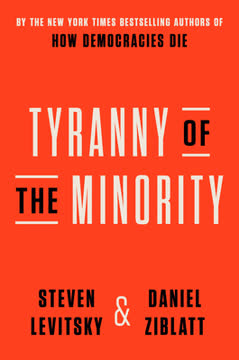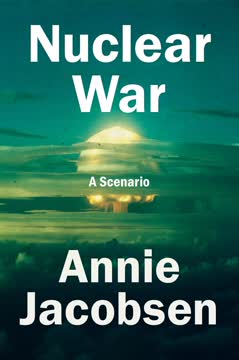重点摘要
1. 美国正危险地接近内战
美国是一个派系化的无政府状态国家,正迅速接近公开叛乱阶段,这意味着我们比想象中更接近内战。
政治不稳定上升。 自2016年以来,美国的民主评级急剧下降,从+10降至+5,处于专家用来衡量政权类型的Polity量表上。这使得美国在200多年来首次坚定地处于民主与专制之间的“无政府状态”区域。
警告信号积累。 美国现在存在几种通常在内战前出现的因素:
- 民主机构的削弱
- 沿身份线的政治极化加剧
- 极端民兵和国内恐怖主义的兴起
- 对政府和媒体信任的下降
- 对政治暴力的接受度增加
专家担忧。 虽然大多数美国人无法想象再次发生内战,但研究政治暴力的学者们看到了与其他陷入内战的国家的惊人相似之处。美国民主倒退的速度尤其令研究人员感到不安。
2. 无政府状态国家最容易发生内部冲突
国家几乎从未在没有中间过渡的情况下从完全专制转变为完全民主。
部分民主国家易受攻击。 无政府状态国家——混合了民主和专制特征的政权——发生内战的可能性是完全民主国家的三倍。它们缺乏专制政权镇压异议的能力,也缺乏民主国家和平解决冲突的强大机构。
不稳定的中间地带。 向民主过渡或远离民主的国家会经过一个危险的中间地带,在这个地带暴力风险激增。无政府状态国家的关键不稳定因素包括:
- 薄弱、无组织的政府
- 民主规范和机构的侵蚀
- 利用不稳定的机会主义精英
- 新赋权群体要求快速变革
- 先前占主导地位的群体抵制地位下降
美国进入危险区。 美国的民主评分下降使其明确处于与冲突风险增加相关的无政府状态类别。民主保障的持续侵蚀可能会将国家进一步推向不稳定。
3. 基于身份的政治派系增加不稳定性
如今,预测美国人投票方式的最佳指标是他们的种族。
身份政治上升。 美国的政党越来越多地与种族、宗教和地理身份而非意识形态联系在一起。这种基于身份的“派系化”是内战的关键预测因素。
危险的分裂加深。 美国的政治格局越来越多地由互不相容的身份群体定义:
- 种族:90%的共和党人是白人;民主党人则更加多样化
- 宗教:白人福音派主导共和党;世俗选民倾向于民主党
- 地理:农村与城市的分歧与党派归属密切相关
族裔企业家煽动紧张局势。 政治领导人利用和加剧身份分裂以获取权力,将对立群体描绘为生存威胁。这种“我们对他们”的心态使妥协变得困难,暴力更有可能发生。
4. 地位下降驱使群体走向暴力
在21世纪,最危险的派系是那些曾经占主导地位但面临衰退的群体。
权力丧失激发极端主义。 历史上曾掌握权力但看到其地位下滑的群体最有可能发动暴力。这种“降级”会产生一种怨恨和绝望感。
美国的白人焦虑。 许多白人美国人,尤其是农村地区的白人,感到他们的地位和生活方式受到以下因素的威胁:
- 向多数少数族裔国家的转变
- 有利于受过教育的城市专业人士的经济变化
- 挑战传统价值观的文化变化
与其他冲突的相似之处。 类似的群体地位下降导致暴力的动态在以下地方上演:
- 北爱尔兰(新教徒抵制天主教徒的赋权)
- 南斯拉夫(塞尔维亚人反对失去主导地位)
- 伊拉克(逊尼派反对什叶派多数统治)
5. 改革失败和失去希望引发内战
当一个群体展望未来只看到更多的痛苦时,他们开始将暴力视为进步的唯一途径。
和平尝试先于暴力。 大多数叛乱组织首先尝试非暴力方法,如抗议、选举和法律挑战,然后才诉诸武装冲突。只有当这些方法反复失败时,对和平变革的希望才会破灭。
冲突的催化剂。 通常在内战爆发前出现的关键触发因素:
- 政府对抗议的残酷回应
- 操纵或取消选举
- 有希望的改革努力失败
- 对反对派团体的政治压迫
美国正在经历警告信号。 最近的事件,如对BLM抗议的暴力回应、选举舞弊的指控和1月6日的袭击,都与其他战前背景中的触发因素有相似之处。对和平政治进程信心的持续侵蚀增加了风险。
6. 社交媒体加速极化和极端主义
取消社交媒体的扩音器,你就能降低欺凌者、阴谋论者、机器人、喷子、虚假信息机器、仇恨传播者和民主敌人的音量。
算法放大分裂。 社交媒体平台旨在最大化“参与度”,这通常意味着推广有争议和极端的内容,从而加剧群体间的紧张关系。
回音室激化。 在线空间允许极端思想迅速传播,用户自我隔离在意识形态泡沫中,减少了接触温和观点的机会。这为阴谋论和激进化创造了肥沃的土壤。
外国势力利用。 美国的对手利用社交媒体故意制造不和,加剧内部分裂,将其视为一种新形式的信息战。
监管挑战。 社交媒体的无国界性质和言论自由问题使得监管在线极端主义变得困难,允许危险的意识形态不受限制地传播。
7. 国内极端主义在美国构成日益严重的威胁
如果我们知道恐怖分子的目标是什么,以及他们可能如何追求这些目标,我们可以制定自己的对策,借鉴世界其他国家的经验。
极右翼团体扩张。 自2008年以来,美国活跃的反政府极端组织数量激增,特别是白人民族主义组织的增长。
暴力增加。 与极右翼意识形态相关的国内恐怖主义事件近年来急剧上升。值得注意的袭击包括:
- 2015年查尔斯顿教堂枪击案
- 2017年夏洛茨维尔汽车袭击
- 2018年匹兹堡犹太教堂枪击案
- 2019年埃尔帕索沃尔玛枪击案
- 2021年国会大厦暴动
政府反应滞后。 美国执法和情报机构在认识和应对日益严重的国内恐怖威胁方面反应迟缓,而是专注于外国极端分子。
8. 第二次美国内战将是分散的游击战
如果美国发生第二次内战,战斗人员不会在田野里集结,也不会穿制服。
没有常规战斗。 与第一次内战不同,现代冲突可能涉及:
- 小型、分散的民兵组织
- 针对官员和平民的定点暗杀
- 基础设施和公共场所的爆炸
- 对政府和金融系统的网络攻击
界限模糊。 区分平民和战斗人员将变得困难,极端分子会融入社区。
不对称战术。 叛乱分子将使用游击战和恐怖主义来激怒政府过度反应并制造混乱。
外国干预可能。 美国的对手可能会秘密支持叛乱组织以破坏国家稳定。
9. 加强民主是防止冲突的关键
我们需要改革政府,使其更加透明,更加对选民负责,更加公平和包容所有公民。
巩固机构。 减少冲突风险的关键改革:
- 加强投票权和选举诚信
- 减少选区划分和竞选资金腐败
- 改善公民教育和媒体素养
- 监管社交媒体以减少极端主义
解决不满。 积极解决引发怨恨的问题:
- 投资农村和去工业化地区
- 提高经济流动性,减少不平等
- 改革移民制度
- 促进包容的国家认同
两党合作至关重要。 政治领导人必须拒绝极端主义,跨党派合作以加强民主规范和机构。
从历史中学习。 像南非这样的国家通过妥协和包容性改革成功度过了危险的过渡期。美国可以从这些经验中汲取教训,走上和平的道路。
最后更新日期:
FAQ
What's How Civil Wars Start: And How to Stop Them about?
- Focus on civil wars: The book examines the conditions and factors that lead to civil wars, using historical examples and data analysis to identify patterns in conflicts worldwide.
- Modern implications: Barbara F. Walter argues that the warning signs of civil war are visible in contemporary America, stressing the need to recognize these signs to prevent future violence.
- Predictive framework: Walter introduces a framework for predicting civil wars, focusing on political structures, social divisions, and identity politics, with a particular emphasis on "anocracy."
Why should I read How Civil Wars Start: And How to Stop Them?
- Timely relevance: The book provides critical insights into the factors leading to civil unrest, essential for understanding current political climates in the U.S. and globally.
- Expert analysis: Walter's extensive research and experience as a civil war scholar offer a well-researched perspective combining theory with real-world examples.
- Preventive strategies: It discusses potential strategies for preventing civil wars, making it a valuable resource for policymakers, activists, and concerned citizens.
What are the key takeaways of How Civil Wars Start: And How to Stop Them?
- Anocracy as a risk factor: Countries with political systems that are neither fully democratic nor autocratic are more prone to civil war.
- Role of identity politics: Ethnic and religious identities can become politicized, leading to factionalism and violence when groups feel threatened.
- Importance of hope: The loss of hope among citizens can trigger civil conflict, as people may resort to violence if they believe peaceful reform is impossible.
What are the best quotes from How Civil Wars Start: And How to Stop Them and what do they mean?
- “We have trusted, for too long perhaps, that peace will always prevail.” This highlights the complacency that can lead to civil unrest, emphasizing the need for vigilance.
- “A movement turns to violence when all hope is lost.” It underscores the desperation that can drive groups to extremism, stressing the importance of addressing societal issues.
- “Hope shrinks in the face of blatant government brutality.” This emphasizes the role of hope in maintaining social order and the consequences of losing faith in government.
What is the concept of anocracy in How Civil Wars Start: And How to Stop Them?
- Definition of anocracy: Anocracy is a political system with both democratic and autocratic features, often leading to instability and a higher risk of civil war.
- Historical examples: The book uses examples like Iraq post-Saddam to illustrate how rapid political transitions can lead to conflict.
- Predictive value: Walter discusses how the polity index score can predict civil war likelihood, with anocracies being at the highest risk.
How does How Civil Wars Start: And How to Stop Them relate to current events in the U.S.?
- Warning signs in America: Walter identifies political polarization, extremist groups, and erosion of democratic norms as warning signs of civil conflict in the U.S.
- Impact of social media: The book discusses how social media can amplify divisions and spread misinformation, contributing to societal unrest.
- Call to action: Walter urges readers to recognize these signs and take action to prevent civil war, emphasizing civic engagement.
What role do factions play in civil wars according to How Civil Wars Start: And How to Stop Them?
- Definition of factions: Factions are groups coalescing around shared identities, often leading to power competition and civil war.
- Historical context: The book provides examples like the Yugoslav Wars to illustrate how factions can escalate into violence.
- Consequences of factionalism: Entrenched factions can lead to social cohesion breakdown and increased likelihood of armed conflict.
How does How Civil Wars Start: And How to Stop Them explain the psychological aspects of civil conflict?
- Downgrading and status loss: Groups feeling their status slipping may resort to violence to reclaim their position.
- Emotional triggers: Emotions like fear and anger can fuel conflict, especially when groups perceive identity threats.
- Hope and despair: Hope is crucial in preventing civil war; losing hope in peaceful reform can lead to violence.
What preventive measures does How Civil Wars Start: And How to Stop Them suggest?
- Strengthening democratic institutions: Reinforcing democratic norms and institutions can reduce civil war risk.
- Addressing grievances: Open dialogue and negotiation can help address marginalized groups' grievances and prevent conflict.
- Civic engagement: Active citizen involvement in political systems can foster transparency and accountability.
How does social media influence civil wars according to How Civil Wars Start: And How to Stop Them?
- Amplification of divisions: Social media can exacerbate divisions, spreading extremist narratives and inciting anger.
- Recruitment tool for extremists: It serves as a recruitment tool, allowing extremist groups to organize and mobilize quickly.
- Misinformation and disinformation: The spread of false narratives can increase tensions and undermine trust in institutions.
What historical examples does How Civil Wars Start: And How to Stop Them use to illustrate its points?
- Yugoslav Wars: Used as an example of how factionalism and identity politics can lead to civil war.
- Iraq post-Saddam: Highlights how rapid political change can create instability and sectarian violence.
- Philippines and Mindanao: Illustrates the psychological aspects of downgrading and perceived loss of power.
What is the pre-insurgency phase as defined in How Civil Wars Start: And How to Stop Them?
- Initial grievances identified: Groups articulate grievances and build a collective identity, creating narratives to rally support.
- Recruitment and organization: Groups recruit members and prepare for potential conflict, laying groundwork for future violence.
- Stockpiling resources: As tensions rise, groups may stockpile weapons, indicating a shift towards armed conflict.
评论
《内战如何开始》由芭芭拉·F·沃尔特撰写,探讨了导致内战的条件,借鉴了历史实例和数据分析。评论者认为这本书既有洞见又令人警醒,赞扬了沃尔特对无政府状态、派系主义和社交媒体在冲突中作用的考察。许多读者欣赏作者将这些概念应用于当前美国政治气候。然而,有些人批评这本书在后几章中存在的政治偏见。总体而言,尽管在某些观点上存在分歧,读者仍认为这本书发人深省且具有现实意义。
Similar Books












